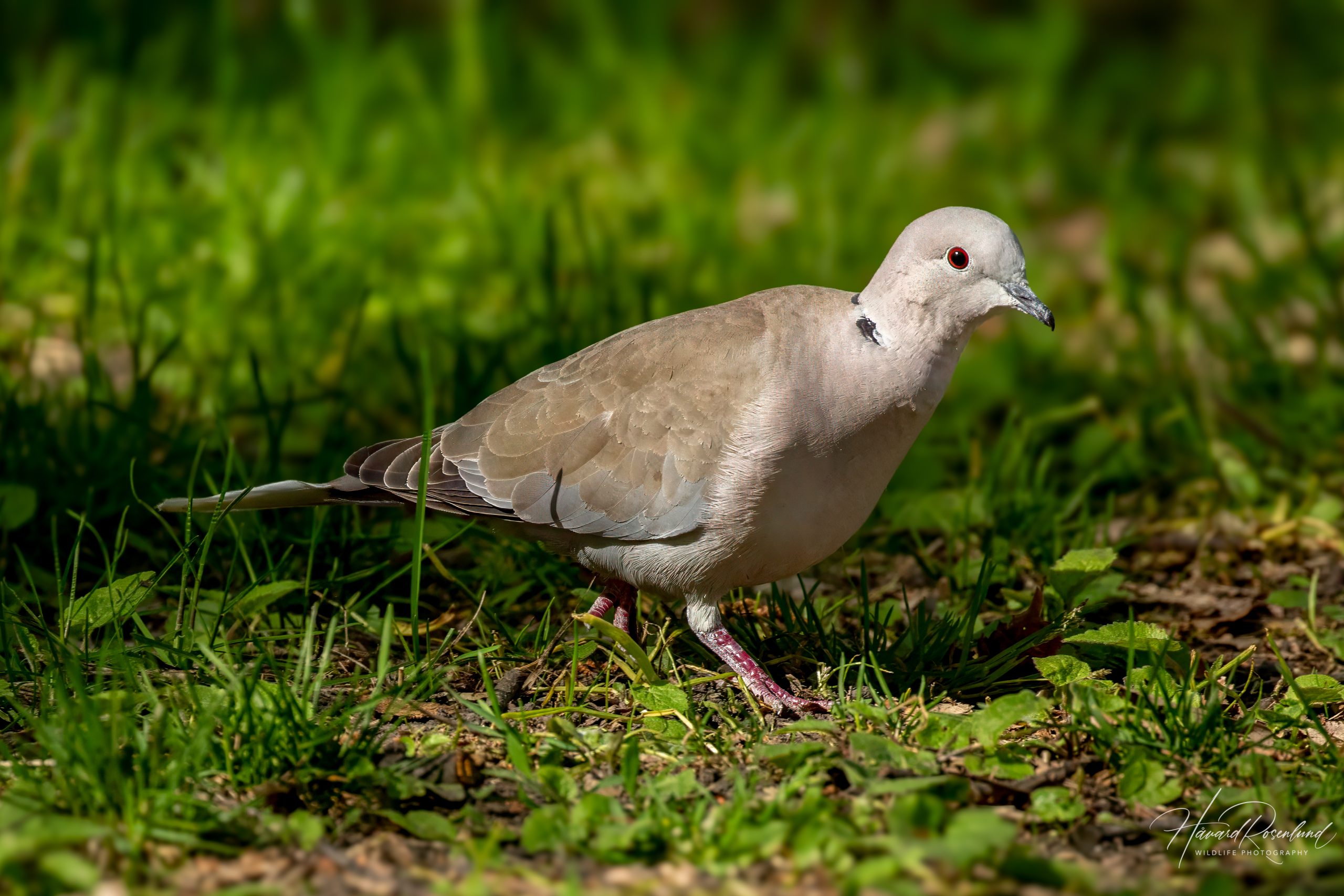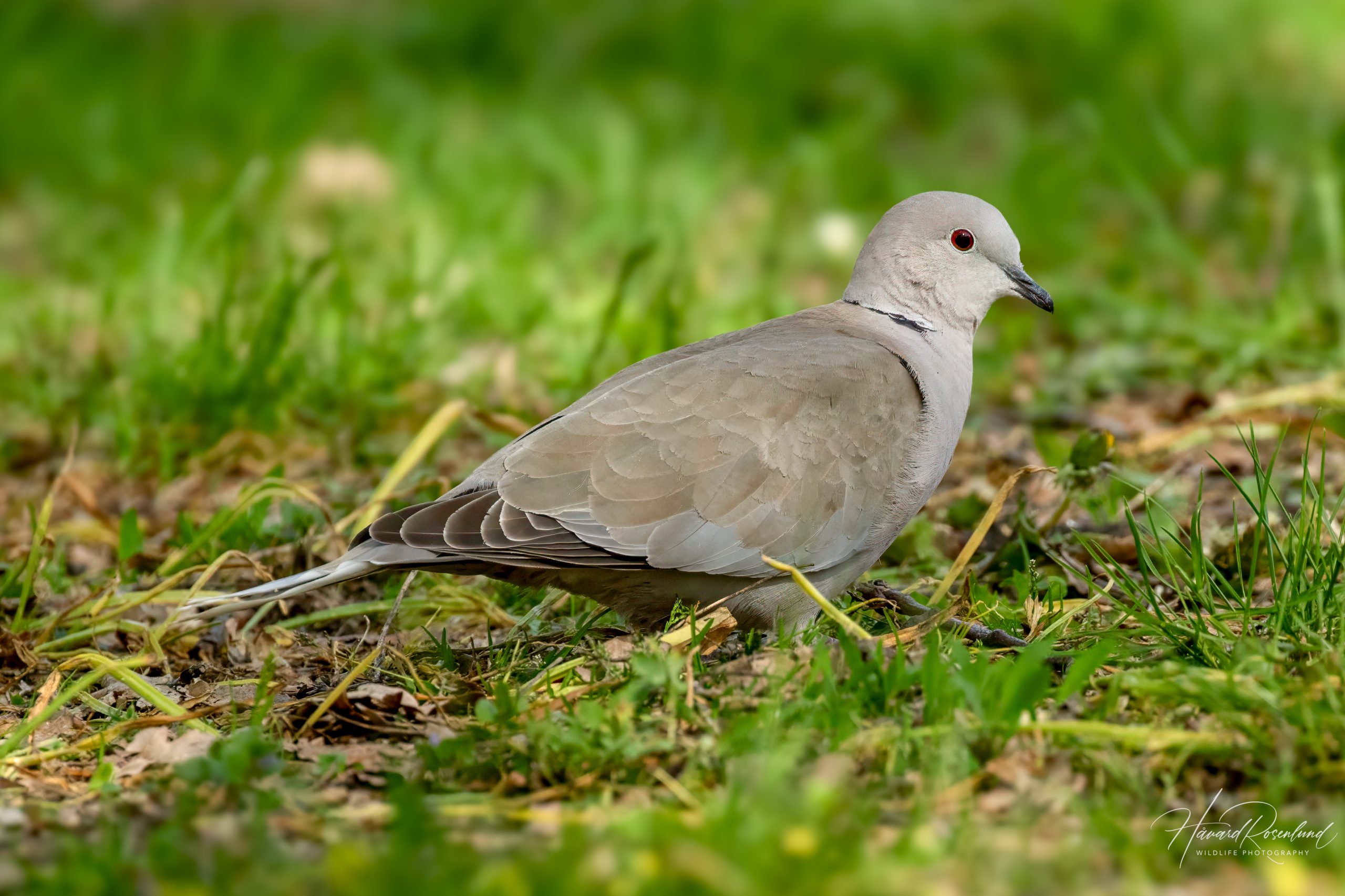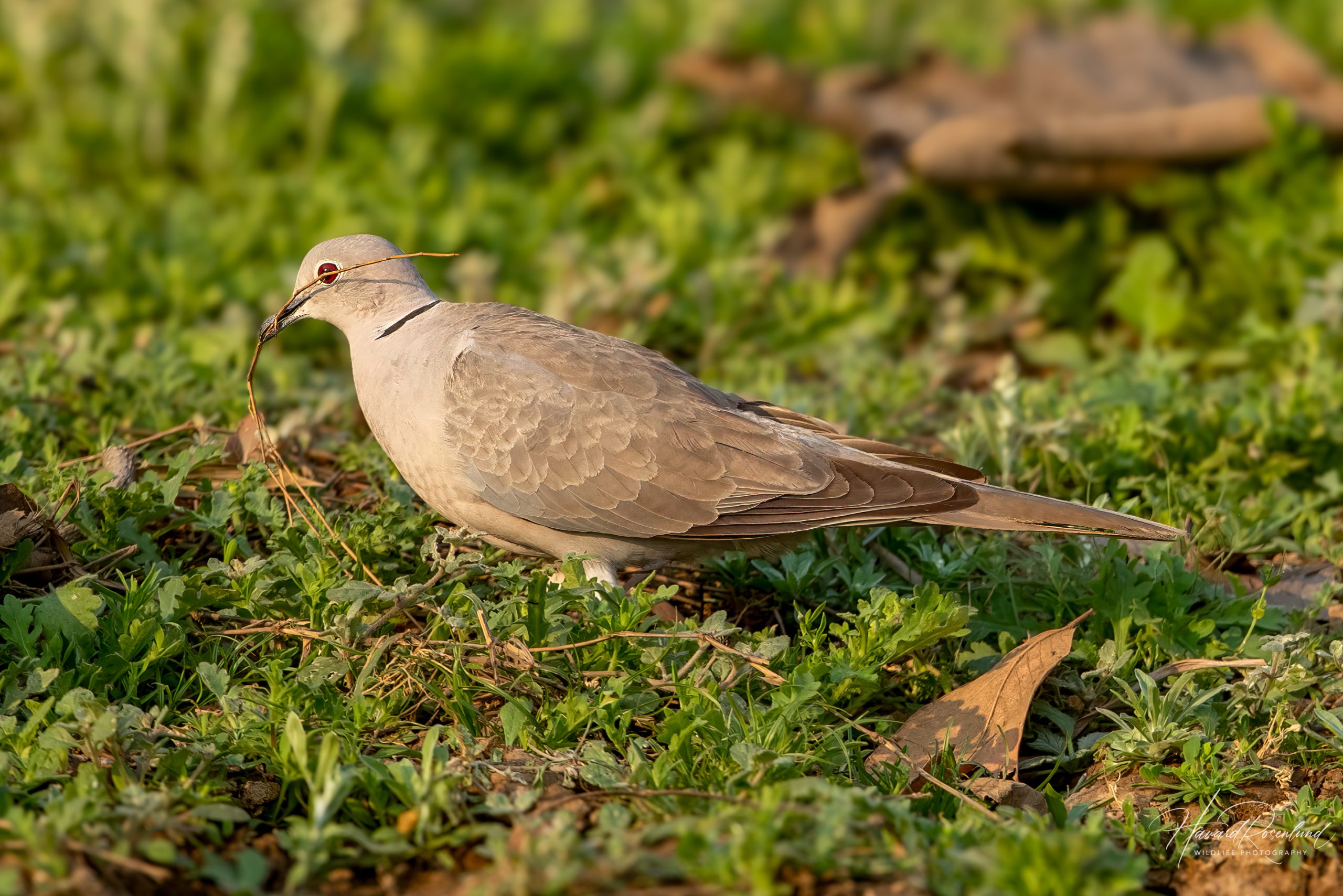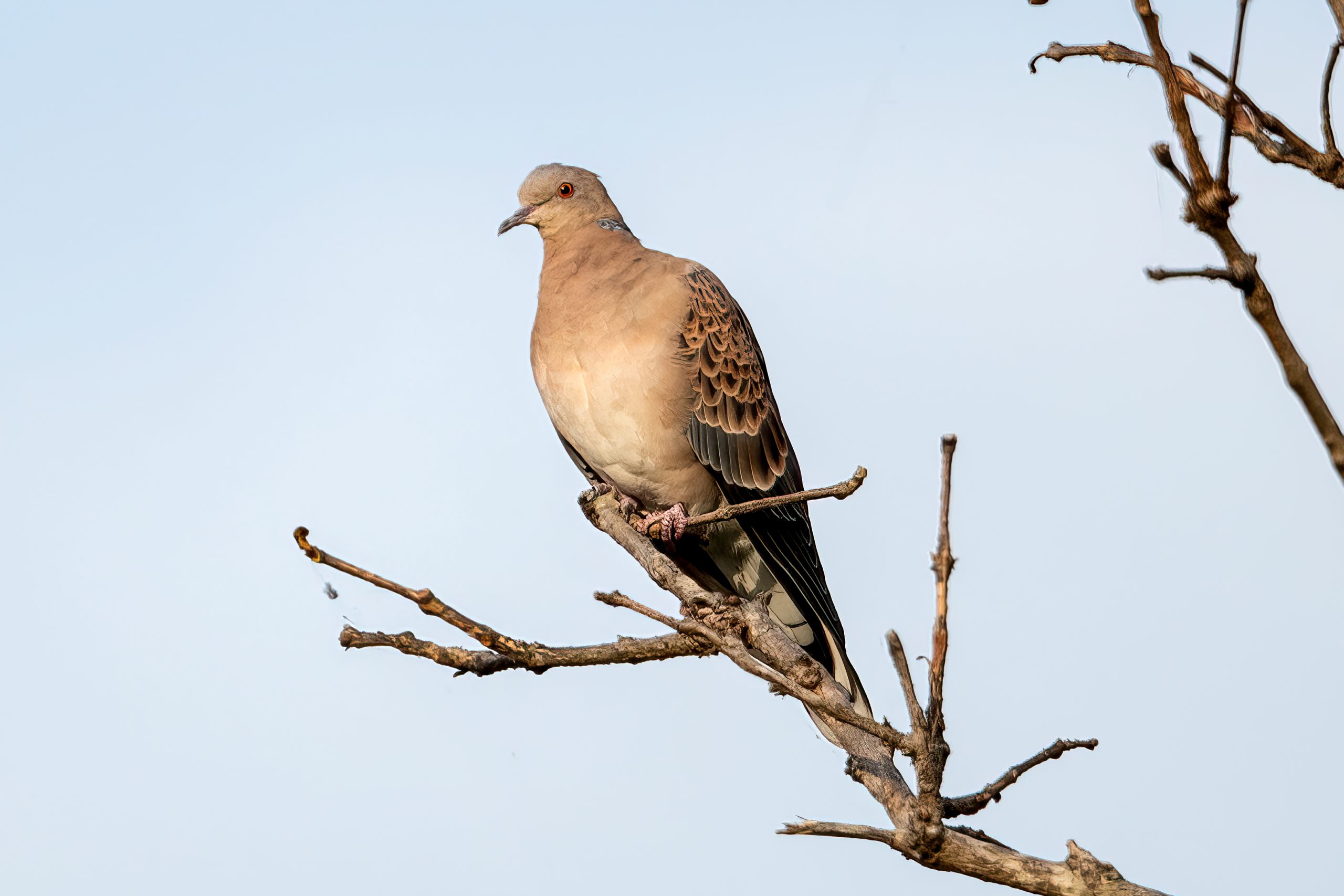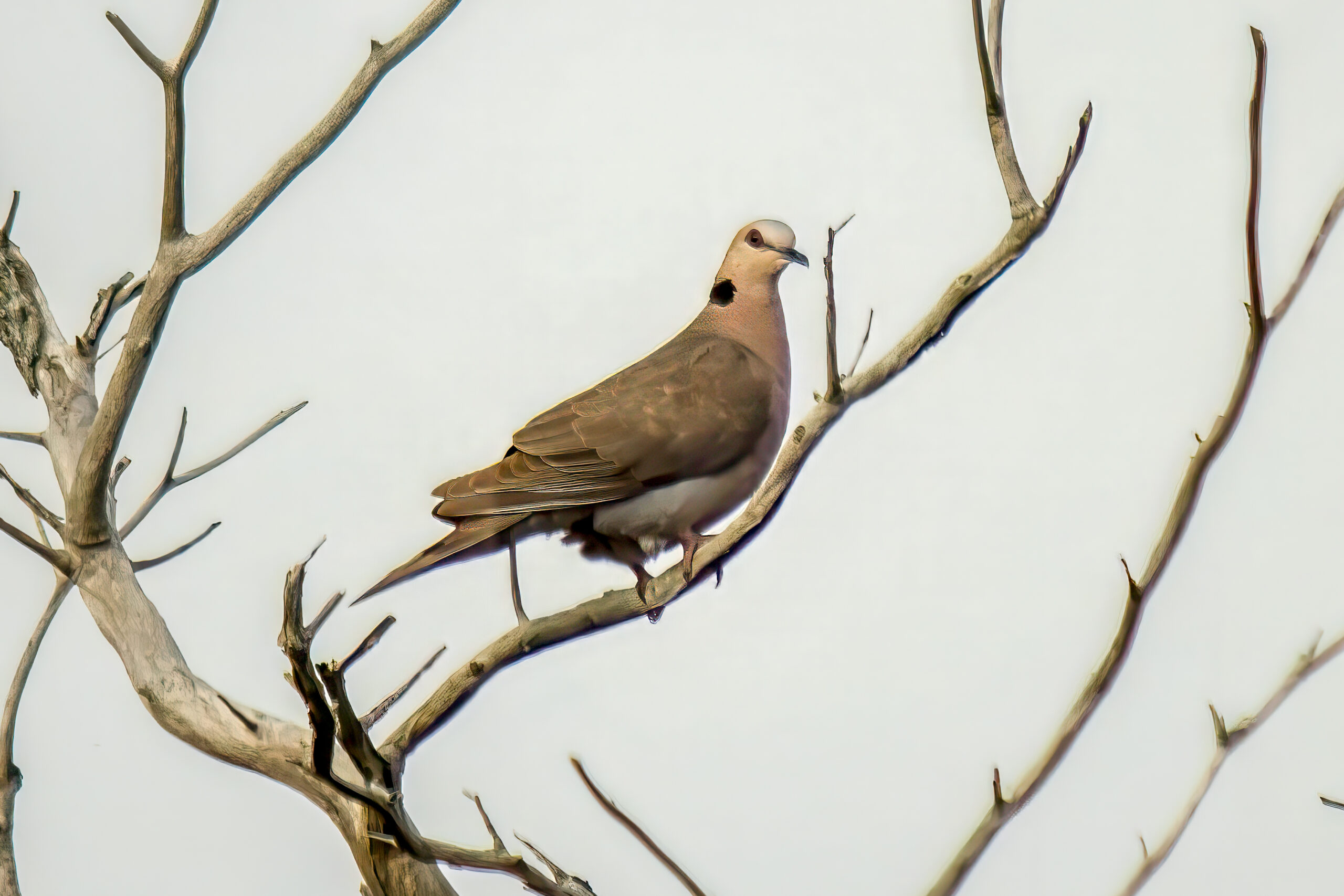Description
The Eurasian collared dove (Streptopelia decaocto) is a medium-sized dove that is native to temperate and subtropical regions of Europe and Asia. This species has a length of 31-34 cm (12-13 inches) and a wingspan of 47-55 cm (18.5-21.7 inches), with males and females being similar in size and appearance. The dove is easily recognized by its overall pale grayish-buff plumage, which is slightly darker on the back and wings. A distinctive black collar edged with white at the nape of the neck is a prominent feature, giving the bird its common name. The wings are broad and rounded, and the tail is long with white tips, visible in flight. The eyes are red with a narrow black orbital ring, and the legs are reddish. Its call is a monotonous three-part cooing sound often rendered as “coo-COO-coo.”
Diet & habitat
Eurasian collared doves are highly adaptable and can thrive in a variety of habitats. They are commonly found in urban areas, parks, gardens, and agricultural lands, favoring open landscapes with scattered trees. In rural areas, they are often seen around farmsteads and villages.
Their diet consists primarily of seeds and grains, but they are opportunistic feeders and may also consume small invertebrates and green vegetation. In urban settings, they are known to forage on human-provided food sources such as bird feeders. Feeding mostly occurs on the ground, where they display a methodical pecking behavior to gather food. They are also adept at exploiting bird tables and other feeding stations.
Nesting
Breeding season for the Eurasian collared dove varies geographically but generally spans from February to October in temperate regions, and year-round in warmer climates. These doves are monogamous, and pairs are often seen together throughout the year. The male performs a display flight, consisting of a steep, noisy ascent followed by a gentle, spiraling glide with wings and tail spread.
Nests are flimsy platforms constructed of twigs and are usually placed in trees, bushes, or on building ledges. The female typically lays two white, glossy eggs. Incubation lasts about 14-18 days and is shared by both parents. After hatching, both parents also share in feeding the chicks a regurgitated, nutrient-rich substance known as “pigeon milk.” Fledging occurs about 15-20 days post-hatching. Juveniles are distinguishable from adults by their duller plumage and the absence of the distinctive neck collar.
Introduced populations
The Eurasian collared dove has been introduced to various parts of the world outside its native range, including North America, the Caribbean, and parts of East Asia. The introduction to North America began in the Bahamas in the 1970s, from where they rapidly spread to Florida and then across the continent. This expansion is attributed to their adaptability to different environments and their ability to exploit new habitats and food sources. The rapid spread of the Eurasian collared dove in North America is considered one of the fastest recorded avian range expansions.
In areas where they have been introduced, they are often seen as both a nuisance and a competitor to native bird species, particularly affecting populations of native doves and pigeons. They have been noted to displace native species from preferred habitats and food sources due to their aggressive behavior and prolific breeding.
Status
The Eurasian collared dove is listed as least concern on the IUCN Red List due to its widespread distribution and large, increasing population. There are no significant threats to the species on a global scale, and it has demonstrated remarkable adaptability to a variety of habitats, including human-modified environments. However, in regions where they have been introduced, their impact on local ecosystems and native bird species is a cause for concern and requires ongoing monitoring.





